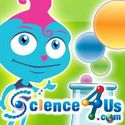-
About
- About Listly
- Community & Support
- Howto
- Chrome Extension
- Bookmarklet
- WordPress Plugin
- Listly Premium
- Privacy
- Terms
- DMCA Copyright
- © 2010-2025 Boomy Labs


 paula-cover
paula-cover
Listly by paula-cover
The following free interactive activities are part of the Science4Us.com program. Science4Us provides 28, two-week modules that cover Physical Science, Life Science, Earth/Space Science and Scientific Inquiry. Students acquire a solid science foundation through games, simulations, stories, and songs. Structured around the 5E Instructional Model, Science4Us maximizes instructional time by integrating literacy and mathematics within the science curriculum.

In the Heat Energy module, students explore this type of energy that can be felt. Students use their hands to build friction and make heat energy. In the Larry in his Laboratory activity, students learn about conduction and radiation with an animated host and live-video examples.

Students are fascinated with tools and machines. In the Simple Machines module, students see examples of how simple machines can make work easier by reducing the force needed to move an object over a distance. Then, students use interactive activities to experiment with these simple machines: lever, pulley, wheel and axle, wedge, screw, and inclined plane. Hands-on activities are also available to give students actual experience with simple machines. By the end of this module, students will know just how to decrease the amount of force needed to move an object!

The Tools module introduces students to the tools scientists use for both qualitative and quantitative observations. Students learn to use tools such as their 5 senses, rulers, and balance scales through hands-on activities.

The Animals module begins with an area of fascination for students, animals of all sorts. An animated host begins the unit by introducing students to wild animals in their habitats. In online and offline activities, students broaden their understanding of animals by learning to identify and classify animals into six categories: mammals, birds, fish, amphibians, reptiles, and invertebrates.

In the Light Energy module, students learn that light energy is the energy that allows them to see the matter around them. Through interactive lesson and activities, students explore the differences between natural and man-made light.

The Earth Unit begins with the History of Earth module. Students learn about Earth’s long history and the place of exciting things like volcanoes, dinosaurs, and giant bugs within that history.

Kindergarten through Grade 2 students have experience with matter in its three states: solid, liquid and gas. In the States of Matter module, students further explore the concept that anything on earth that has mass and takes up space is matter. This module introduces students to solids, liquids and gases, the three most common states of matter on earth, and the unique properties used to characterize each phase.

The Eco Awareness module builds directly from the knowledge students have gained about the natural world around them. Students learn that many factors affect whether or not living things can thrive in their habitats.

The Changes in Matter module further explores the concepts from previous modules, and looks at how matter may be modified or changed. Through an instructional video, games, and activities, students explore three types of change matter makes: physical change, in which only the shape of the matter changes; physical phase change in which matter changes to a different form — solid, liquid, or gas; and chemical change, in which matter is changed in a way that cannot be undone, for example, fruits ripening or foods cooking.

Exploring the Universe begins with elements of space that we can see, like the sun and stars. In interactive online activities, students learn about the sun and stars and the Milky Way. Students learn to distinguish stars in the night sky from planets, airplanes or the International Space Station.
